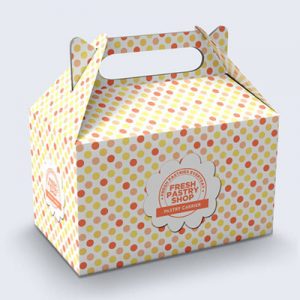Good adhesion should be that the adhesive applied between the corrugated corrugated paper and the facial paper is quickly gelatinized after high-temperature baking, and the paper and the adhesive are firmly combined. When they are peeled off by special equipment and accessories, the adhesive should be torn. It’s the fibers of the paper, not the release of the adhesive.
The adhesive used in the tile line mainly controls the solid content, gelatinization temperature and viscosity of the adhesive during the preparation process.
Detailed explanation of the three major technical indicators of tile line adhesives
The solid content refers to the content of starch, caustic soda, special desiccant for raw rubber, and borax in the adhesive. It mainly refers to the amount of starch. The higher the starch content, the higher the solid content. Adjusting the gap of the rubber roller during use can increase the vehicle speed, increase the output, and facilitate drying. The solid content of the prepared adhesive should account for about 20% of the total adhesive.
The gelatinization temperature refers to the critical temperature between the raw and cooked adhesives. When the gelatinization temperature of the adhesive is low, the heat consumed in the production process is less, so the vehicle speed can be increased.
Viscosity refers to the ability of the adhesive to flow during production and use. We require low viscosity adhesives, in fact, to have good fluidity in use. Can improve initial adhesion. The preparation of cooked pulp is the key to controlling the viscosity of the adhesive. First, we must strictly control the mixing time. When the mixing time is not enough, the viscosity of the adhesive will be unstable; second, the ratio of caustic soda and other raw materials must be mastered. Only by properly grasping the relative relationship between the solid content of the adhesive, the gelatinization temperature and the viscosity can a good quality adhesive be produced, thereby ensuring good adhesion in the production process.
Principle requirements for the production of tile wire adhesive
In the production process, the viscosity of starch glue is directly proportional to the temperature and the amount of caustic soda. During use, the viscosity of starch glue is inversely proportional to temperature and stirring speed. In order to avoid the rapid decrease in the viscosity of the glue during use, try to reduce the increase in the circulation and temperature of the glue (for example, the gear pump of the circulation system can be changed to an air pump, and the large cycle can be changed to a single cycle).
1. The viscosity of the adhesive used in single-sided machine and three-layer line production is controlled within: 20-50 seconds (coating 4 cups).
2. The viscosity of the adhesive used in the production of the five-layer and seven-layer lines is controlled within: 50-90 seconds. In special circumstances, the viscosity of the adhesive can be adjusted according to requirements.
The relationship between the speed of the corrugated board production line and the vapor pressure and temperature (see table)
How to match the speed of the tile wire with the performance of the adhesive
If the speed of the single-sided corrugated locomotive is too fast, the amount of glue on the corrugated corrugated peak must be considered. At this time, the solid content of the adhesive is required to be high, otherwise the bonding effect will be affected.
If the speed of a single-sided corrugated locomotive is too slow, it will increase the amount of glue on the corrugated corrugated peak. At the same time, due to the slow speed and too high temperature, the adhesive will cure prematurely and lose its good bonding effect. The film will be glued.
Too fast a double-sided locomotive will reduce the amount of glue applied to the corrugated corrugated peaks. At the same time, due to the too fast speed, the heat consumption will increase, the temperature will decrease, and the adhesive will not gelatinize well, resulting in poor bonding.
Too low a double-sided locomotive speed will increase the amount of glue applied to the corrugated corrugated corrugated paper, and the temperature will gather and the corrugated paper will be over-baked, which will destroy the adhesive structure and cause the corrugated paper to be scorched and brittle.
Principle requirements for the production of tile wire adhesive
When making the adhesive, it is produced in strict accordance with the operating procedures and process requirements, while taking into account the influence of various factors to ensure the bonding effect of the corrugated board. Generally pay attention to the following principles:
1. The quality of the raw and auxiliary materials used must be guaranteed
2. The measurement of various raw and auxiliary materials should be accurate when feeding
3. Use good water quality as much as possible
4. Ensure the appropriate temperature of the production environment and venue
5. Ensure proper viscosity
6. Ensure proper concentration
7. There is no sediment in the finished adhesive
8. The viscosity of the finished adhesive does not change much during storage and use
9. Ensure good initial viscosity and permeability during the production process









